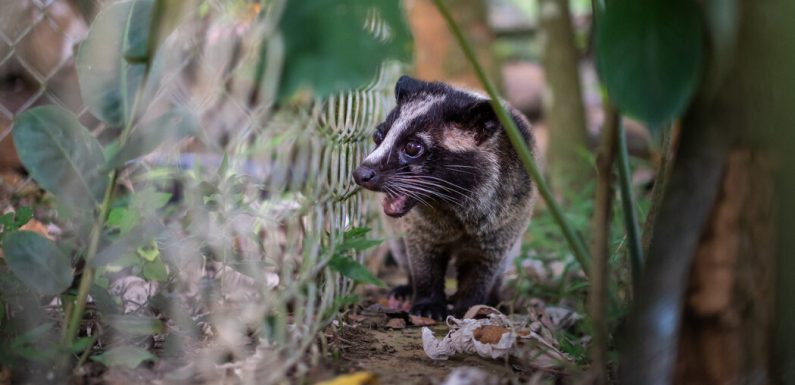
As the coronavirus continues to evolve, the scientific and public health focus has been on new variants in which a few mutations make the virus more infectious, or even, it may be, more deadly.
These changes in the virus are all what scientists call point mutations, the substitution of one tiny bit of genetic code for another. Coronaviruses, as a group, are not known to mutate rapidly, but the pandemic caused by the virus SARS-CoV-2 means that millions and millions of people are infected by billions and billions of viral particles, offering countless chances for change.
There is, however, another more significant way that coronaviruses change. Individual viral particles exchange larger sections of genetic material, with another virus. If two different kinds of coronavirus inhabit the same cell, the result could be not a new variant, but a new species.
Three University of Liverpool researchers writing in the journal Nature Communications predicted, based on a computer analysis, that such events are far more likely than previously thought, and recommended monitoring of target species to watch for possible emergence of new coronavirus diseases.
The work pointed in some directions where scientists are already alert. They identified the lesser Asiatic yellow bat and the greater and intermediate horseshoe bats as animals where recombination would be more likely to occur. But their analysis also pointed to animals that scientists have been less focused on, such as the common pig, as a creature that should be monitored.
Marcus S. C. Blagrove, a virologist who wrote the report along with Maya Wardeh, who specializes in computer analysis of animal disease spread, and Matthew Bayliss, a veterinary epidemiologist, said that coronaviruses were known for “swapping large chunks all over the place.”
Emergence of new diseases through this process is not common because an animal needs to be infected with two different kinds of coronaviruses at the same time.
Latest Updates
Jeremy Luban, a virologist at the University of Massachusetts, said such a double infection with two kinds of viruses replicating in one cell had yet to be documented in humans. But just such a recombination is how SARS seems to have emerged, and researchers think SARS-CoV-2 may also be the result of two viruses combining.
Dr. Luban said he thought that “this kind of work is extremely important” because it could come up with surprising insights that experiments and field work can follow up on.
The group of researchers at Liverpool used a kind of computer analysis called machine learning to look at a number of different data points, including the genetic structure of coronaviruses and mammalian species as well as their behavioral similarity and geographic proximity to come up with predictions of which animals were most likely to harbor the most numbers of coronaviruses.
The Coronavirus Outbreak ›
Let Us Help You Better Understand the Coronavirus
-
- Are coronavirus case counts rising in your region? Our maps will help you determine how your state, county or country is faring.
- Vaccines are rolling out and will reach many of us by spring. We’ve answered some common questions about the vaccines.
- Now that we are all getting used to living in a pandemic, you may have new questions about how to go about your routine safely, how your children will be impacted, how to travel and more. We’re answering those questions as well.
- So far, the coronavirus outbreak has sickened more than 106 million people globally. More than two million people have died. A timeline of the events that led to these numbers may help you understand how we got here.
They predict that 40 times as many mammal species can be infected with four or more different kinds of coronaviruses than are now known, and that up to 126 species of mammals may be susceptible to infection by SARS-CoV-2.
As a reality check, they pointed out that their analyses correctly predicted some known associations of animals and viruses. The modeling highlighted the palm civets, the animal from which SARS seemed to have spilled over to humans as a potential hot spot for coronavirus evolution.
Over all, they warned that the possibility of recombination resulting in the emergence of some new dangerous coronavirus is highly underestimated.
Source: Read Full Article
